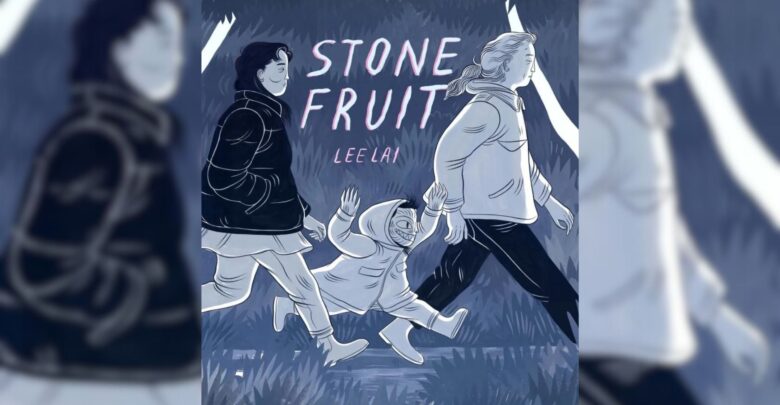Book Review: ‘Stone Fruit’ by Lee Lai
'Stone Fruit' is a beautifully raw portrayal of heart break and familial relationships.
 Supplied
SuppliedLee Lai is a queer, Australian author who currently lives in Montréal. Her debut graphic novel “Stone Fruit” is a heart-wrenching, yet simultaneously heart-warming story about family, identity, and love.
The graphic novel came out in 2021, but I only recently discovered it thanks to Edmonton Lesbian+ Book Club. This nearly year-round book club reads works by queer female-identified, non-binary, and transgender authors. While I didn’t finish the book in time for the book club, I’m still glad I discovered “Stone Fruit.” Even when Lai made me want to cry, her characters and her story were comforting.
The story follows a couple, Bron and Ray, as they navigate their family dynamics and identity. Ray’s relationship with her sister Amanda is strained and her relationship with Bron is slowly falling apart. But in the midst of it all is Nessie, Amanda’s kid, who all three of them love.
Lai’s art style is unique from anything I’ve seen before and it captivates the reader. The moments of wild playfulness between Nessie, Bron, and Ray are when the art style really shines through. Lai transforms the characters into carefree creatures that aren’t burdened by their worries. Both the artwork and the story are incredibly beautiful in these scenes.
Lai’s illustrations convey the mellow and frankly depressing moments perfectly. Some of my favourite moments were when Nessie’s singing crossed over into Bron’s scenes while Bron was away from Nessie and Ray. It was clear that even if Ray and Bron were no longer together that they both still cared for Nessie and would be there for her.
Even while Lai was breaking my heart with Ray and Bron’s slow breakup, Nessie was a ray of sunshine. Nessie is undoubtedly the star character of the story. Her playfulness and joy lighten the darker moments of the novel. But Nessie’s care and understanding of Ray’s sadness was even sweeter than her carefree moments.
Lai’s portrayal of both Ray and Bron’s depression was candid and heart-breaking. Both Bron and Ray’s depression complicated their relationship with each other and with their family. Yet somehow, it was also immensely comforting to see such a raw portrayal of depression and complicated relationships.
Queerness and Bron’s identity are a point of tension in both Bron’s relationship with her family and Ray’s relationship with Amanda. Gradually, Ray and Amanda come to see eye-to-eye and understand each other better. It’s their shared love for Nessie that brings the sisters together.
As a queer and transgender woman, Bron’s religious family and community treat her like an outsider. It caused Bron to leave her home years ago and again near the end of the novel. Bron clearly wants to amend her relationship with her parents and sister, but ultimately isn’t able to. Even so, she chooses to prioritize her own well-being over other people’s judgement and expectations.
The ending of the novel was imperfect, equally heart-breaking and heart-warming. Ray and Bron didn’t magically fix their relationships by the end — the relationships between the characters were still a long way from being perfect. But Amanda, Ray, and Bron all still loved Nessie enough to stick it out for her.
Lai’s art and storytelling isn’t something I’ll forget anytime soon. I’ll definitely be exploring more of her work and impatiently waiting for another graphic novel like “Stone Fruit” from her.




